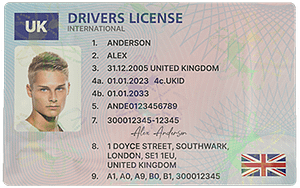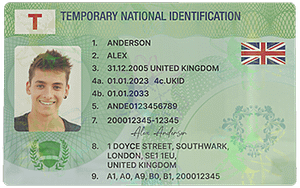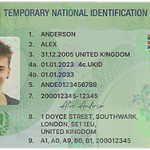Libraries have long – been regarded as institutions of knowledge and community engagement. One of the often – overlooked but crucial aspects of their operations is the verification of patrons’ ID cards. This process plays a multi – faceted role in ensuring the smooth functioning and security of library services.
Access Control
The most immediate role of ID card verification in libraries is access control. Libraries house a vast collection of resources, including books, periodicals, digital materials, and sometimes even specialized equipment. By verifying the ID cards of patrons, libraries can determine who is eligible to access these resources. For example, some libraries may have restricted access areas such as research collections or archives that are only available to authorized individuals. An ID card serves as proof of a patron’s identity and their right to enter certain sections of the library. This helps in maintaining the integrity of the collection and ensuring that valuable resources are not misused or damaged by unauthorized persons.

Moreover, in an era where many libraries offer online access to their collections, ID card verification is equally important for digital access. Patrons need to authenticate themselves using their ID – related credentials to access e – books, online databases, and other digital resources. This helps in protecting the library’s digital assets from unauthorized access and ensures that only registered patrons can enjoy the benefits of these services.
Security and Safety
Library verification of ID cards also contributes significantly to the overall security and safety of the library premises. Libraries are public spaces that attract a diverse range of visitors. Verifying ID cards helps in keeping track of who is in the library at any given time. In case of an emergency, such as a fire or a security threat, having a record of the patrons present can be invaluable for evacuation and safety procedures. It allows library staff to quickly identify individuals and ensure that everyone has safely exited the building.

Additionally, ID card verification acts as a deterrent to potential wrongdoers. Knowing that their identity will be verified and recorded may discourage individuals from engaging in activities such as theft, vandalism, or harassment within the library. This creates a safer and more comfortable environment for all patrons and library staff.
Service Provision
ID card verification is essential for the proper provision of library services. It helps libraries in maintaining accurate patron records. When a patron’s ID card is verified, details such as their contact information, borrowing history, and any special privileges or restrictions can be easily accessed. This information is crucial for services such as book reservations, overdue notices, and personalized recommendations. For instance, if a patron has reserved a popular book, the library staff can quickly identify them when they come to pick it up by verifying their ID card.
It also enables libraries to offer tailored services to different types of patrons. For example, students may have different borrowing limits and access rights compared to community members. By verifying ID cards, libraries can ensure that each patron receives the appropriate level of service based on their status.
Preventing Identity Theft and Fraud
In today’s digital age, identity theft and fraud are significant concerns. Libraries play a role in preventing these issues through ID card verification. When a patron presents their ID card for verification, libraries can check for any signs of tampering or fraud. If an ID card appears to be forged or misused, the library can take appropriate action, such as denying access or reporting the incident to the relevant authorities. This helps in protecting both the library’s interests and the identities of its patrons.
Furthermore, by maintaining proper records of ID card verifications, libraries can detect any unusual patterns of access or borrowing that may indicate identity – related fraud. For example, if a patron’s ID card is being used by someone else to borrow a large number of expensive or rare items, the library can investigate and take steps to prevent further fraud.
Common Problems and Solutions
- Problem: Outdated ID Cards
Solution: Libraries should have a clear policy regarding the acceptance of outdated ID cards. They can set a reasonable time frame within which an ID card remains valid for library purposes. For example, an expired driver’s license may still be accepted for a short period after expiration if it is accompanied by other forms of identification. Additionally, libraries can provide information to patrons about how to update their ID cards in a timely manner, such as notifying them well in advance if their ID is approaching its expiration date. - Problem: Lost or Stolen ID Cards
Solution: Libraries should have a process for handling lost or stolen ID cards. Patrons should be required to report the loss or theft immediately. The library can then deactivate the lost or stolen ID card in its system to prevent unauthorized use. Patrons can be issued a replacement ID card for a nominal fee, and the library should ensure that the replacement process is relatively quick and straightforward. This may involve verifying the patron’s identity through alternative means, such as asking for additional identification documents or cross – referencing their contact information. - Problem: Difficulty in Verifying Digital ID Credentials
Solution: Libraries need to invest in user – friendly and secure digital identity verification systems. These systems should be able to handle a variety of digital ID formats and be compatible with different devices. In case of difficulties in verification, libraries can provide online support or have a dedicated helpdesk. For example, if a patron forgets their password for accessing digital library resources, the library can offer password reset options that are both secure (such as two – factor authentication) and easy to use. - Problem: Forged or Tampered ID Cards
Solution: Library staff should be trained to recognize the signs of forged or tampered ID cards. This may include knowledge of security features on different types of ID cards, such as holograms, watermarks, and microprinting. Libraries can also use technology such as ID card scanners that can quickly detect any irregularities. If a forged or tampered ID card is suspected, the library should follow a clear protocol, which may involve confiscating the card, notifying the patron, and reporting the incident to the appropriate law – enforcement agencies. - Problem: Inconsistent ID Card Policies Among Libraries
Solution: There should be some level of standardization in ID card verification policies among libraries, especially in the same region or network. Libraries can collaborate to develop common guidelines for ID card acceptance, verification, and replacement. This can make it easier for patrons who use multiple libraries. Additionally, libraries can share information about best practices in ID card verification to improve the overall quality of service and security.


